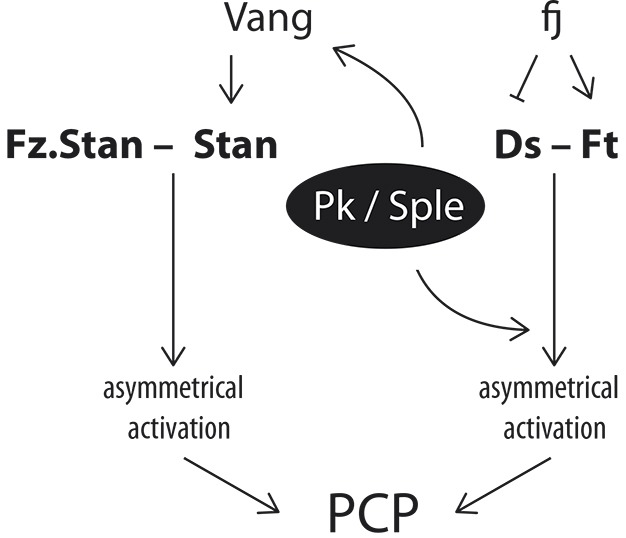Fig. 8.

Pk and Sple functions in the context of PCP. PCP depends on molecular bridges between cells: for the Stan/Fz system the key bridge consists of a complex of Stan and Fz in one cell and Stan in the other; Vang promotes function of the Stan pillar of this bridge (Struhl et al., 2012). For the Ds/Ft system, Ds in one cell is linked to Ft in another, the activity of both is modulated by Fj (reviewed by Butler and Wallingford, 2017). Pk and/or Sple bind to Vang and promote asymmetrical distribution of Vang and other PCP molecules. Yet in the absence of Pk and Sple, the Stan/Fz system can still receive and send polarity information, implying that it is the asymmetric activation of protein complexes that polarise a cell rather than asymmetric localisation. Pk and Sple alter the sign of the polarity output of the Ds/Ft system, but by an unknown mechanism. Yet, Pk and Sple can alter polarity output even when the Ds/Ft system is broken. The results show that Pk and Sple can act separately on both systems, implying some general function of Pk and Sple in cell polarity. The indispensable elements of the two systems are shown in bold.
